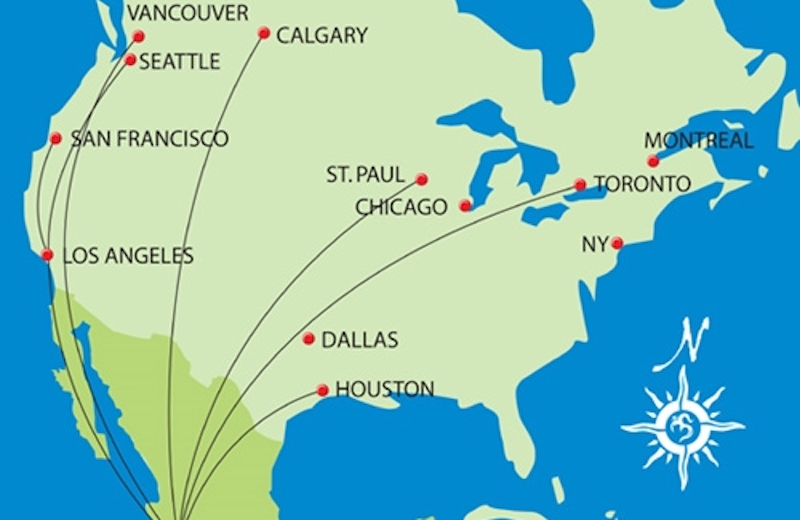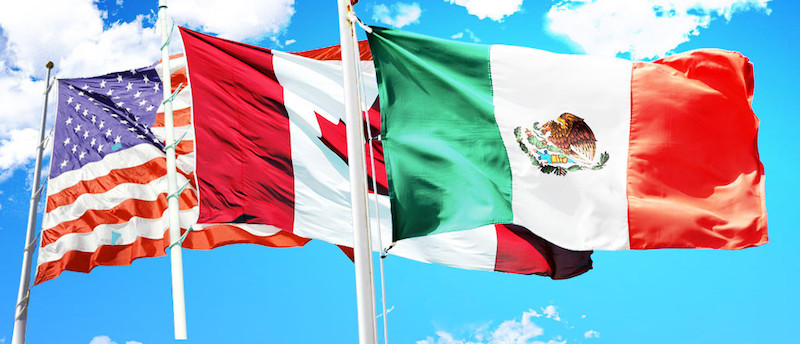Nearshoring Vs Offshoring. What’s The Difference?
You may have heard these common terms related to supply chains:
- Nearshoring
- Offshoring
- Onshoring
Are you wondering what these terms mean (and what’s the difference between them)? You came to the right place. We’ll discuss each term and go over the differences between the terms.
What Is Nearshoring?

Nearshoring means outsourcing manufacturing to a nearby country. Often times, the nearby country shares a border with the country where the company is located. For example, many Canadian and USA companies nearshore their manufacturing to Mexico.
What Is Offshoring?
Sometimes written “off shoring”, offshoring means outsourcing manufacturing to another country. It can mean a country that’s nearby or a country that’s far away. Offshoring is a general term that describes:
- Nearshoring
- Farshoring (outsourcing manufacturing to a distant country, such as China if you’re located in the USA)
For the sake of clarity, we’ll use “offshoring” to only describe farshoring in this post.
What Is Onshoring?
Another common term you may have heard is “onshoring”. It’s also called “reshoring”, and sometimes written as “on shoring”. Onshoring means outsourcing manufacturing to a less expensive facility in the same country. For example, Ford has an assembly plant in Claycomo, Missouri. They likely onshored to Missouri because it’s cheaper than assembling parts in their existing locations.
Which Is Better: Nearshoring Or Offshoring?
Many companies – especially those from the USA and Canada – avoid onshoring. Manufacturing can be quite expensive in the USA and Canada. So companies are often left with two choices: nearshoring or offshoring (or farshoring). Which option is better? To us, nearshoring is clearly the better option. Here’s why:
1. Shorter Supply Chain
When you outsource manufacturing to a nearby country, you’ll enjoy the benefits of a shorter supply chain. That means:
- You’ll get your shipment faster
- The shipping costs will be lower
- You won’t face as many supply chain issues
If you offshore to a distant country, the supply chain is long. This makes supply chain issues more likely. Supply chain issues can cause the following problems:
- Significant delays in production
- Promises not being met with your clients
- Diminished reputation of your company
2. Overseas Shipping Is Complicated And Expensive

Overseas shipping can be quite a logistical nightmare. It’s especially true with COVID-19 in the picture. It’s not uncommon to deal with the following issues when shipping from overseas:
- Delays in customs processing (that can take a few weeks)
- Higher likelihood of disruptions in the supply chain
- High shipping prices
COVID-19 has introduced even more problems to overseas shipping. For example:
- Many shipping lines reduced their capacities and routes
- This means scarce commercial cargo availability and longer shipping times
- Some countries are taking precautions by holding ships until the crew is confirmed to be virus free
- Some countries have installed screening measures, which delays shipping times
Even the air freight industry is not immune to the virus. COVID-19 has brought air freight commercial capacity down by over 90%.
Nearshoring means less complicated and more affordable shipping. You can choose from a variety of shipping options, including:
- Air freight
- Truck
- Rail
These methods don’t come with as many problems as overseas shipping does. This infographic shows how much easier it is to ship via air, truck, or rail as compared to ocean freight.
3. The New Trade Deal Makes Nearshoring A Better Option For USA And Canadian Companies

On July 1, 2020, the USA, Canada, and Mexico entered a new trade agreement. It’s called the United States-Mexico-Canada Agreement (USMCA). The agreement is designed to keep auto parts manufacturing within North America. Here are some of the key points of the agreement:
- As of 2023, automakers must use at least 75% of North American-made parts in their vehicles.
- Mexican and Canadian manufacturers will be exempt from any future tariffs on select auto parts.
In other words, the agreement makes nearshoring a very attractive option for USA and Canadian companies. If you have your auto parts made in a distant country, North American automakers will likely not want to put your parts in their vehicles. They will be much more likely to work with you if you have your auto parts made within North America.
4. Less Travel Time And Real Time Communication
When you nearshore your manufacturing, you’ll enjoy:
- Less travel time for executives
- Real time communication
The manufacturer will likely be at most 2 time zones away from you. And they’ll be a short flight (or even a short drive) away. You’ll also enjoy real time communication from them. For example, you can call them during the same business hours as yours.
Executives working with distant countries often complain about:
- Long travel times
- Jet lag
- Poor communication
These problems disappear when nearshoring in North America.
Nearshoring To Mexico

Now that we’ve established that nearshoring is a great option, let’s talk about why nearshoring to Mexico is a smart move for your company. Here are some reasons:
- Nearshoring to Mexico is cost-effective, especially during this pandemic
- Mexico produces more engineering, manufacturing, and construction degrees per capita than the USA and most other countries in the world
- Mexico auto parts manufacturing is booming
At Intran, we’re a reputable auto parts manufacturer based in Mexico. We have a skilled labor force and a wide variety of equipment and services. Learn more about our capabilities here!
